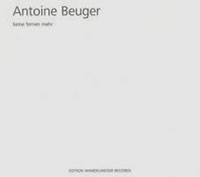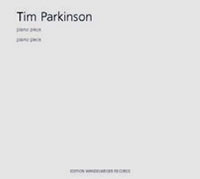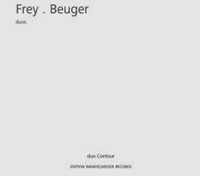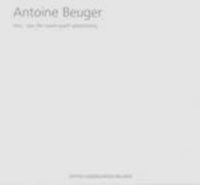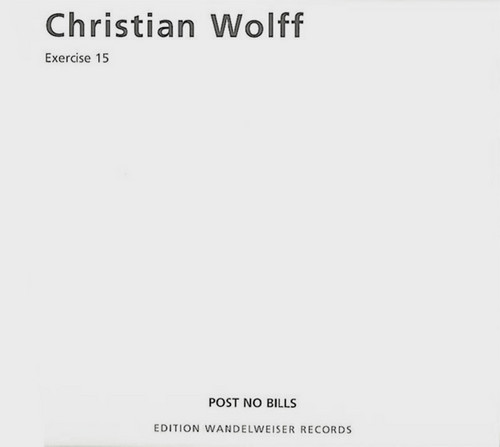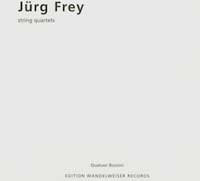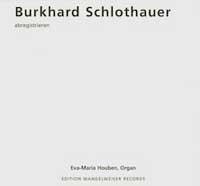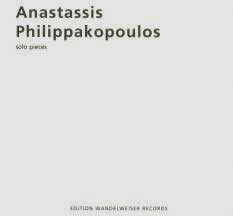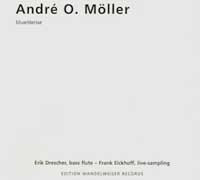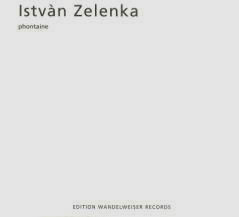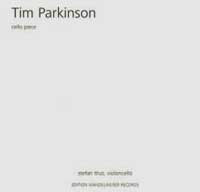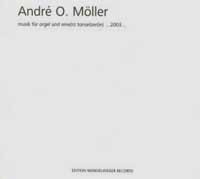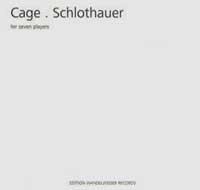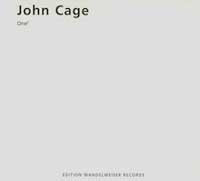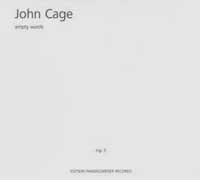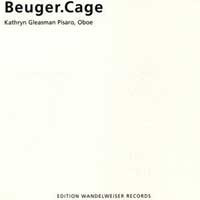★Edition Wandelweiser
keine fernen mehr
'keine fernen mehr I' and 'keine fernen mehr II'. Antoine Beuger, whistling. Recorded Studio von Buktu, Wuppertal, August 2010. Recording, editing, mastering: Tim Buktu. Recommandation: this CD is best played at a very low volume level.'
piano piece
piano piece (2006)Starting from nothing except the idea of the sound of the instrument, and the possibility of anything.From this starting point, then tracing a path through this limitless field of constant possibility.Focusing on the present. Every moment in the piece as a beginning. piano piece (2007)To work, for a period of time, until that work and time is over.Working, and the resultant work itself, as a means of knowledge, an instrument of exploration; which is therefore always beyond ones…
duos
Since their formation in 1998 at the Darmstadt Summer Courses for New Music, duo Contour have commissioned and performed over 40 new pieces by composers from Asia, Europe, New Zealand, Switzerland and the United States. Their collaborative work has combined the acoustic world of trumpet and percussion with dance, electronics, improvisation, origami, story-telling, theatre and video, as well as and with other musicians in their 'duo Contour plus….' programmes. The duo has been resident at …
im sefinental
Stefan Thut 'Aussen raum' (2008). Manfred Werder '2008(3)' (2008). A field recording near a river divided in two parts.
two . too (for erwin-josef speckmann)
two . too (for erwin-josef speckmann) two: two, who are at one with anotherzwei, die sich einig sind too: two, who are at one with another (twice)zwei, die sich einig sind (zweimal) text: “as the full moon rises / the swan sings / in sleep / on the lake of the mind” (kenneth rexroth)indes der vollmond steigt / singt der schwan / im schlaf / auf des geistes see
Exercise 15
"Exercise 15" was made out of and invites transformations or transcriptions. It's for piano or ad hoc instrumental arrangement. Its material is from a 1920s song "Union Maid" (as I found it in Edith Fowke and Joe Glazer's collection "Songs of Work and Protest") by Woodie Guthrie using an earlier popular song tune. The tempo of the music is not specified. Sometimes it's played rather fast, as the original tune probably was, sometimes at a deliberate, 'prosaic' tempo. Here it's in a slow motio…
string quartets
Material can be anonymous. Consider, for example, the middle voices in medieval hymn books: unadorned, not artful, a simple handiwork, a leisurely alternation of single notes. It might be a scale, or, beyond music, the stones of a wall, not artfully stacked, but simply and properly, the formal idea being nothing other than that of a wall. When I was working on the String Quartet (1988), I encountered the painting of Agnes Martin. I saw clear-cut forms, not overgrown with rhetoric and figuratio…
abregistrieren
“select a sound of one or three tones within the range of an octave distribute the pitches between the keyboards (use each pitch only once) select 3 – 31 stops from principals, flutes and reeds and distribute them evenly between the keyboards (do not use mixtures) play the pitches and hold the keys down (e.g. with lead weights) push the stop very slowly until you hear a change – then stop the movement, listen for a while and pull another register in the same way for a long time, only t…
Solo pieces
music that allows sounds to sound: to die away, completely, into silence sounds thought from their end: not moving forward, but drawing back. this creates space, expanse, a delicate serenity: silence - and what it shelters - becomes audible. this is singing with the ears: barely more than silence. a singing which not only makes, but becomes space: a space for worlds. phrases are also sounds: unfolded, laid out as a path. sound paths that come into being first when followed, invariabl…
blue/dense
this piece uses 17 tones in whole-numbered proportions to a virtual fundamental of G'' (25Hz). the piece is a kind of analysis of the overtone region from the fifth to seventh partials and the corresponding regions one and two octaves above (10th to 14th, 20th to 28th partials). the tones are played and recorded during the first three parts and played back as samples at specific times. as many as 28 tones may sound simultaneously. the flute sounds are amplified, which allows us to hear t…
ein(e) ausfuhrende(r) seiten 218 - 226
I try to imagine the sound of the world, the silences and sounds of this recording, and the noise of the playback equipment meeting without differentiation, indeed indistinguishably. Whatever differentiation there is moves within the narrow, utterly partial horizon of a world. Allowing this utterly partial horizon to retain its relative insignificance is a most beautiful challenge. manfred werder translation: michael pisaro
phontaine
this cd is not conceived just to be listened to. supplemented with a simple "score", it may induce a "performance at home". you are invited to experience with your ears, eyes, body and mind, the space of your everyday life, your home, "colored" a little bit differently, alone or in the presence of one or more close persons. the cd consists of a one hour sequence of sounds, three times interrupted by substantial silences. the "score" contains 7 suggestions for simple activities. adjust the …
cello piece
I like that which is the extremely refined sound of a note made by an instrument. I find the sound of a note to be a very extraordinary, elusive and indefinable experience. I like the sound of one note next to another, or at the same time as another. The decisions to be made, from all the myriad array of sounds of notes, from all the potential possibilites of how to present and experience these sounds, is what draws me into the process which results in the making of a piece. I wrote cello piec…
STIMMEN
voices what is music made of? of voices. and what is a voice? a sequence of sounds and silences, with its own consistency. perfectly self-contained: each voice voicing a world. and what is a world? a proportion: a specific distribution of movement and repose. perfect repose, incessant movement. in between: the infinite plurality of possible worlds. writing voices means: to traverse this universe of possibilities, one voice at a time, that is: from world to world. to dwell in worlds, in…
musik fur orgel und eine(n) tonsetzer(in)
what do you do, if you work with just intonation and wish to write a piece for organ? you have to deal with the relation between equally tempered and over- or undertonal (just) intonation. 2001 i had several opportunities to make a study of some wonderful instruments. this eventually put me on the path towards this composition. in this piece only those frequencies of the organ sound that have close to whole-numbered ratios (+/- 6 cents) to a fundamental (in this case C’ at about 32 Hz). becaus…
for seven players
Seven (1988), 15 similar events (2002) Let’s assume, that art music as a field of creative cognitive activity is interrelated with the scientific paradigm and that its structure, therefore, at least partially reflects the contemporary way of looking at the world. The essential paradigmatic elements of the early 21st century would then entail all kinds of demands on music. Having lost certainties, for example, the issue of probabilities should be broached. Fields of possibilities should be desi…
One9
“sounds brushed into existence as in oriental calligraphy" (Cage) the sounds in one9 are single tones and chords, up to six part harmonies. how do sounds come into existence, how do they gain focus, how do they resolve, how do they merge into one another, how can one quietly and attentively, in all modesty, follow their unfolding? these are the questions that guided edwin alexander buchholz in his interpretation of the piece. over the years he played one9 time and again - for himself an…
early music
“The room I entered was a dream of this room.” “It wasn't the hole in the landscape that gladdened us, it was the invitation to the weather to drop in anytime.” John Ashbery (both quotations from: Your Name Here 2000) “...all the hard dry studied Rules that ever was prescribed, will not enable any Person to form an Air any more than the bare Knowledge of the four and twenty Letters, and strict Grammatical Rules will qualify a Scholar for composing a Piece of Poetry, or properly adjust…
Empty Words
"Empty Words" begins by omitting sentences, has only phrases, words, syllables and letters. The second part omits the phrases, has only words, syllables and letters. The third part omits the words, has only syllables and letters. And the last part ... has nothing but letters and sounds. A mix of words, syllables, and letters obtained by subjecting the Journal of Henry David Thoreau to a series of I Ching chance operations. What was interesting to me was making English less understandab…
Beuger.Cage
Composed by Antoine Beuger (1) and John Cage (2)
Kathryn Gleasman Pisaro: oboe
Recorded in Hohenferchesar, August 1998 Engineer: Peter Hecker Produced by Antoine Beuger Layout by Daniel Bechem Includes liner notes in German and English by Kathryn Gleasman Pisaro
